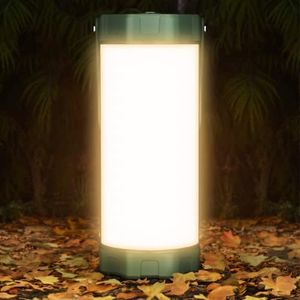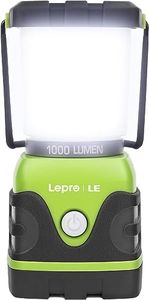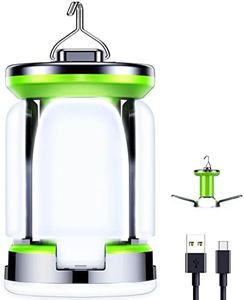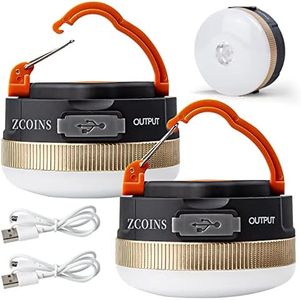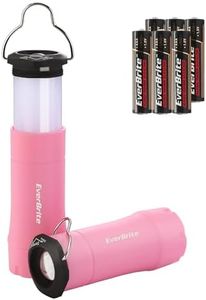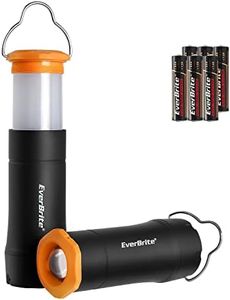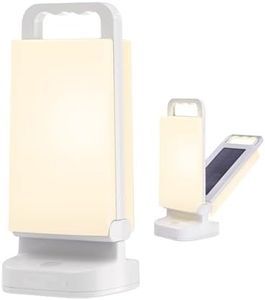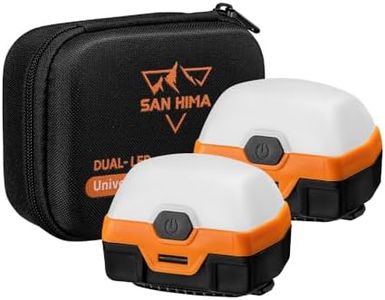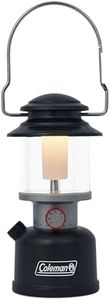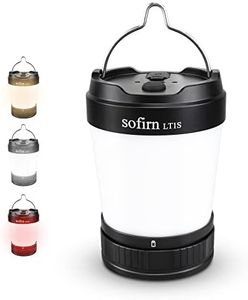We Use CookiesWe use cookies to enhance the security, performance,
functionality and for analytical and promotional activities. By continuing to browse this site you
are agreeing to our privacy policy
10 Best Emergency Lanterns
From leading brands and best sellers available on the web.Buying Guide for the Best Emergency Lanterns
Choosing the right emergency lantern is about ensuring you have reliable light when the power goes out or you're outdoors at night. The best lantern for you depends on how and where you plan to use it – whether it’s for occasional home emergencies, frequent camping trips, or keeping in your car. Different lanterns come with various features, sizes, and brightness levels, so think about your typical scenarios and what would make those situations easier. Prioritize safety, ease of use, and reliability.Brightness (Lumens)Brightness is measured in lumens and tells you how much light the lantern puts out. This is important because a brighter lantern can light up a larger area. Lanterns usually range from about 50 to over 1000 lumens. For indoor emergencies, something around 100-300 lumens will provide enough light without being blinding. If you plan to use your lantern outdoors or need to light up a big area, consider higher lumen ratings, 300 and up. Choose based on your need; a balance between visibility and eye comfort is best for most indoor uses.
Battery Type and LifeThis refers to how the lantern is powered and how long it will run on a single charge or set of batteries. Some lanterns use disposable batteries (like AA or D cells), while others have built-in rechargeable batteries. Battery life can vary from a few hours to several days, depending on brightness settings. For home emergencies where recharging might not be possible, long battery life or easy-to-find batteries are crucial. If you like the convenience of recharging, look for lanterns with built-in batteries and USB charging. Consider what’s practical for your situation: frequent use might favor rechargeables, while infrequent but long-term emergencies might demand replaceable batteries.
Recharge OptionsMany emergency lanterns now offer several ways to recharge: USB, solar panels, or even hand cranks. This is important because more options make the lantern more versatile during emergencies. USB is fast but needs a power source; solar is good for long outages but works best with steady sunlight; hand cranks are a good backup but are slow and tiring. Think about your likely scenarios: if power outages are common or storms are frequent, solar or hand-crank features can make sure you’re never out of light.
Portability and WeightPortability means how easy the lantern is to carry and store. Lightweight and compact lanterns are easier to move and fit in bags or emergency kits. However, very small lanterns might not be as bright or last as long. If you mostly plan to use your lantern at home, weight may not matter as much, while outdoor activities or traveling require lighter and smaller designs. Consider how and where you’ll carry it to pick the best size for you.
Durability and Weather ResistanceThis speaks to how well the lantern can handle rough use, drops, or exposure to water. For outdoor or unpredictable situations, look for lanterns labeled as water-resistant or shockproof. These can withstand rain or accidental drops. If you’ll mostly use your lantern indoors, you might not need these features, but for camping, hiking, or use in wet conditions, higher durability and weatherproof ratings are wise.
Additional FeaturesSome lanterns come with extra features like the ability to charge your phone (power bank function), different lighting modes (like red light for night vision or flashing for emergencies), and built-in hooks or magnets for hanging. These features aren’t essential but can be very useful based on your needs. For example, a power bank function can be life-saving if your phone dies during a blackout. Think about which features would make emergencies easier or make the lantern more versatile for your lifestyle.
